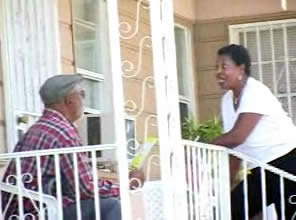 |
 |
 And, in the long run, the sky's the limit. SAGE Council, as Bineshi Albert explains, has taken these goals a step further by holding an annual convention of Native American voters which provides a platform for new community leaders to collaborate, speak out and move in new directions.
And, in the long run, the sky's the limit. SAGE Council, as Bineshi Albert explains, has taken these goals a step further by holding an annual convention of Native American voters which provides a platform for new community leaders to collaborate, speak out and move in new directions.
But as you’re starting out, you can’t do it all with everyone on your targeted list – and if you’re working on an initiative campaign, you don’t want to do it all. (Interaction is a good thing but too much of it gets in the way of assembling a majority.) The time that field organizers spend at the doors, is the most valuable of the project. Spend it wisely. Recognize that there are levels of voter engagement – which we illustrate in our scale – and create tiered goals that reflect these levels. Of the 2,500 people you’ve set out to engage, how many do you want to vote? How many do you want to volunteer? And so on.
One of the common pitfalls that organizers who are new to election work encounter is the inclination to try to do too much right out of the gate. Henry Serrano put it this way: “What we found out the first year is that we initially had tried to do too much at the door. We were trying to do voter education, […] we were trying to get people to volunteer, we were trying to get a promise that they were going to get out and vote, we were trying to do some issue ID with people.” Community Voices Heard got involved in the project to build their base and build a movement, but organizers discovered that those goals had to come second. “It was too much,” Henry says, “What we realized was none of it was going to be done well unless we focused on one particular element of that outreach. We decided that that element had to be getting people out to vote.”
It was not until after the election – after they’d successfully turned out some 2,000 votes – that CVH began working in earnest on engagement at the higher levels. They held leadership development training sessions in the weeks that followed and, later, invited folks to participate in an accountability session with an elected official. And in the next election season, they went back to the training session participants and asked them to lead issue identification meetings in their homes. The lesson is to expand your voter engagement program by taking manageable and purposeful steps that build the capacity necessary to take larger steps in future election cycles.